Look Back is a stunning animated adaptation of Tatsuki Fujimoto‘s one-shot manga. Animated by Studio Durian and directed and written for the screen by Kiyotaka Oshiyama, the film is a dreamlike walkthrough of love, loss, and remorseful grief. On the film’s US release, we spoke with writer-director Oshiyama about the process of adapting the manga from such a well-known mangaka, imbuing his own style on the story and, ultimately, what he learned about himself in the process.
Tackling the work from one of the most recognizable mangaka right now after Chainsaw Man‘s success seems like a daunting task. For Kiyotaka Oshiyama, he and his team entered the filmmaking process by trusting their audience. “We believed that the audience would understand as long as we poured our hearts and souls into the project, so we didn’t feel much anxiety,” Oshiyama said, “We figured that if we started to be conscious of the work being popular, it would make us cowardly in the creative aspect and affect the project negatively. We instead thought that since we were taking on the challenge of visualizing the various qualities of the manga, we needed to make it visually appealing so people would think that it was meaningful to turn it into a film.”
But there was some worry, “That being said, we were worried about how to transform a manga that wasn’t necessarily well-suited for animation. But we focused on the task at hand.” In making the adaptation meaningful for audiences, Kiyotaka Oshiyama also explained that while he didn’t feel that Fujimoto’s art was entirely a unique style, it was still something difficult to translate to animation.
“As an animator who has drawn a variety of styles, I didn’t find Fujimoto-sensei’s style to be particularly unique or special. However, I did feel that it was a difficult style to animate. Adapting the character designs for animation took a lot of thought into it,” he said. “I knew from the beginning that it would be difficult to animate the wrinkles in the clothing, so I made the decision to simply that aspect. The diversity of eye expressions is a characteristic of the style but is also incompatible with animation. So, I carefully considered how to balance the workload of animating them. In the end, we used separation by color or changing up color tracing lines.”
Outside of its art style, the other immediately noticeable difference between Look Back and other films is its short runtime. At just about an hour, the anime feature doesn’t overstay its welcome, and yet it doesn’t overlook anything from Fujimoto’s original work. But in such a short runtime, the film crosses a wide spectrum of emotions: grief, love, loss, admiration, hope, and happiness.
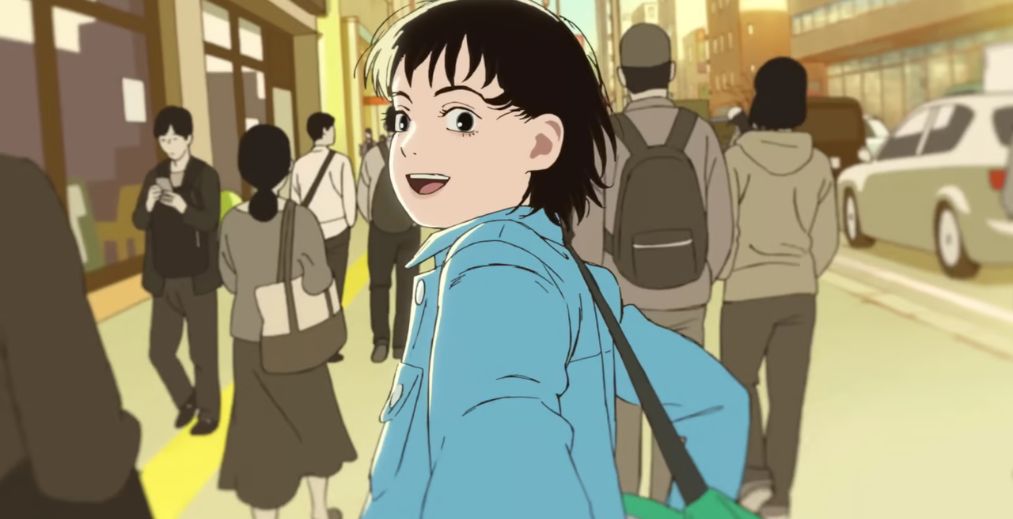
On bringing those emotions to the screen, Oshiyama credited the studio’s focus on the genga technique. “It’s not like Fujimoto-sensei had said, ‘Oh, this is going to be an anime film,'” he said. “So then I also needed to think: I’m not Fujimoto sensei. But even though there is an original story attached to this film, how do I make it my own movie with everything that I got? I think that was the first thing.
“To do that, I drew a lot of art and did a lot in the film… I used a specific technique called genga that uses more of the key animations within the movement. That technique allowed the animator’s key art to come directly on the screen as they drew it. When they were drawing the key animation, their emotions regarding that scene would truly just come to the screen. That’s what I strive for, and I think because of it—more than expected—the emotions of all the key animators who drew all the art resonated with the audience.”
In the spirit of indie animation, Kiyotaka Oshiyama and his team approached Look Back like a manga team would. “In Japan, manga is created by a really small team. There’s a manga artist, and then some assistants do, like, background or color in the dark parts,” Oshiyama explained, “We also [tried] to emulate [that] in this film and [created] it with a small team. So, I really had very few, or the least as possible, key animators who worked [with us on Look Back]. I think, you know, we tried to make it as an independent film so that we could differentiate [our animation] from mass-production films like other companies.”
He continued, “For Look Back, I directed, I did the script, I did the character design, and I [was also] the key animation director. A lot of people around me are saying, Mr. Oshiyama, you keep directing—but then, because of all the key animation that I did on this film, I think this year I did as much key art animation as any animator. So I’m actually not sure if I’m a director and animator now because I drew so much. This project is an irregular way to approach being involved as a director. But I think the theme of the film really matched the style that I wanted to do.”
Look Book doesn’t just capture the individual characters’ emotions throughout its runtime. It also uses visual language to highlight Fujino and Kyomoto. Like the manga it’s based on, dialogue isn’t always at the forefront of the film. Instead, the animated scenes use silence to connect the two characters. And all of that centers on how Oshiyama and his team embraced their interpretation of what the manga’s title means.
“I think the title has a lot of interpretations, but it’s really about the main thing, which is Fujino turning back. That was really easy to show in an animation,” Oshiyama said, “There are a lot of instances where she’s turning back, and you know that they’re good friends, and then they get even closer. And then there’s a lot of Kyomoto looking at Fujino’s back. That’s like a message that she grows up watching Fujino’s back.”
He added, “Then also, in those scenes, Fujino also turns back to look at Kyomoto. So I think [the two always looking toward each other] really emphasizes their relationship. Fujino and Kyomoto holding hands and showing that multiple times is also something that we try to focus on. For example, they may share one pen name and mix their names to make one manga artist’s name. So I really think we try to emphasize those [moments] of them living this one life together.”
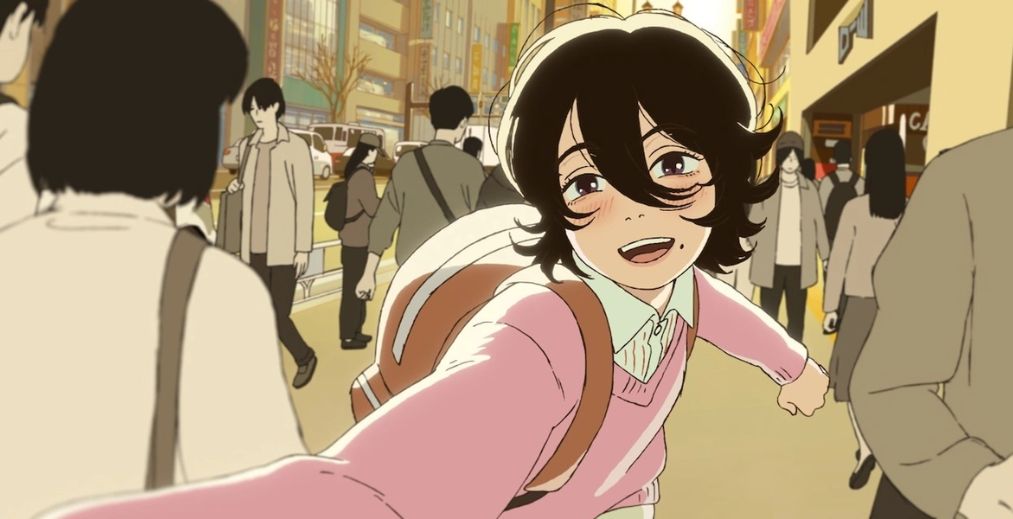
To his point, Look Back is as much a story about looking at the past and thinking about what you could change as it is about learning from others. Or more importantly, that you can’t get through life alone. And well, just learning about yourself in general. For Kiyotaka Oshiyama, even with his small team and taking on multiple roles in the project, he also learned he couldn’t go at it alone.
“I think animation is still not something you could not do alone. I was able to come up with the staff and then work on it together. This isn’t something that is specific to Look Back. I learned from the new people I met, and [I got to spend time] getting in touch with their talent and genius. From that, I learned how to manage things and realize my duty within that [new] environment. And I think that changed my project. Even within this team, I was able to pursue this style of animation, but it’s not something that I couldn’t necessarily say in words.”
Kiyotaka Oshiyama paused, “I’m really sorry that I’m not exactly answering your question. But then I think, by meeting people, and if they’re better at something than I am, then I realize that’s something that I don’t have to work on. [Specificly] that, that’s something that I can leave it to them. [In the team, too], I think I was able to know what I’m good at as well.”
“It’s like how Fujino meets Kyomoto, and then she finds out what she’s good at, and then she leaves the background to Kyomoto. Fujino works on the story and the people, but if I were to compare myself to Fujino, the opposite would happen. I was like, ‘Well, since it’s a small team, let me draw the backgrounds too.’ It’s something opposite from what happened to the manga here, but it has the same impact.”
To close, we asked Kiyotaka Oshiyama what he wanted audiences to take away from their time with the film. ‘I necessarily don’t have a message from myself. It would be enough for the audience to feel what they do when they see the film naturally,” he said. Adding, “But if I were to be greedy, I would like the viewing experience to be special and for the audience to ponder about the film even after leaving the theater. That would make me happy.”
Kiyotaka Oshiyama’s wish to make something meaningful with his adaptation was a bar that was cleared and then some. With a stark portrayal of grief and a vibrant look at connection, Studio Durian’s anime feature adaptation is an example of honoring a source while crafting something unique that adds to its storytelling.
Look Back is playing in limited theaters now, with Tatsuki Fujimoto’s original work available from VIZ Media.



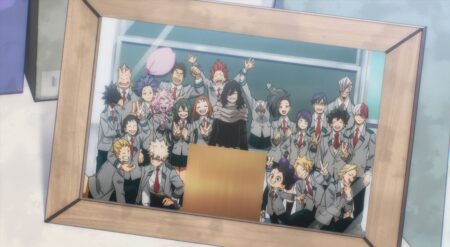
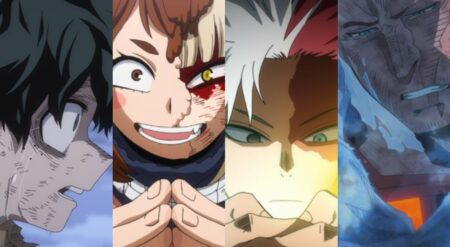
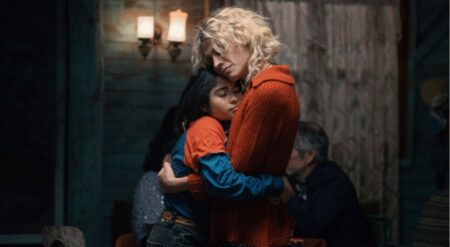

![[EXCLUSIVE] ‘Invincible VS’ Devs Dive Deep Into Their New Original Character: Ella Mental Ella Mental in Invincible VS](https://butwhytho.net/wp-content/uploads/2025/12/Invincible-VS-Ella-Mental-But-Why-Tho-1-450x247.jpg)